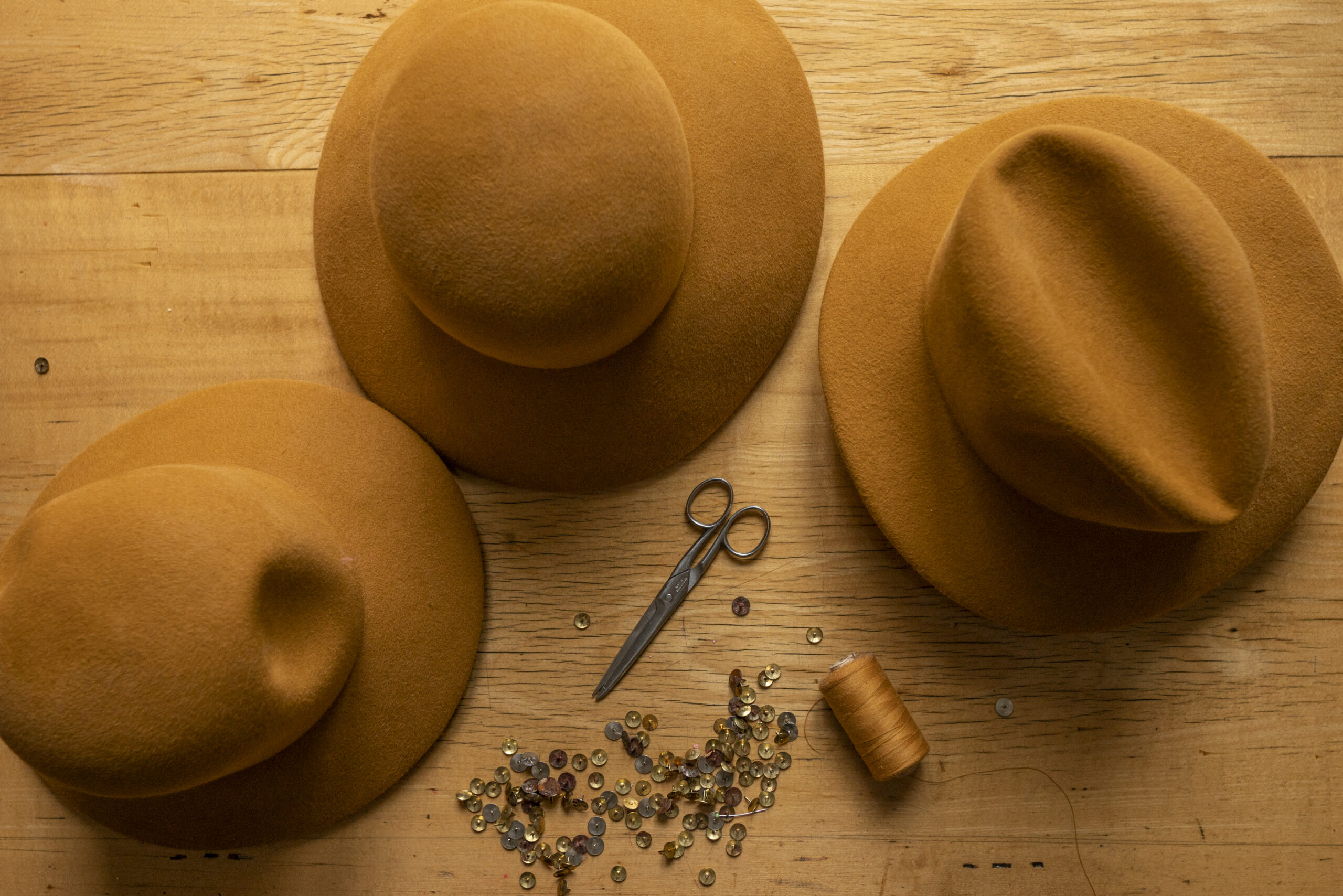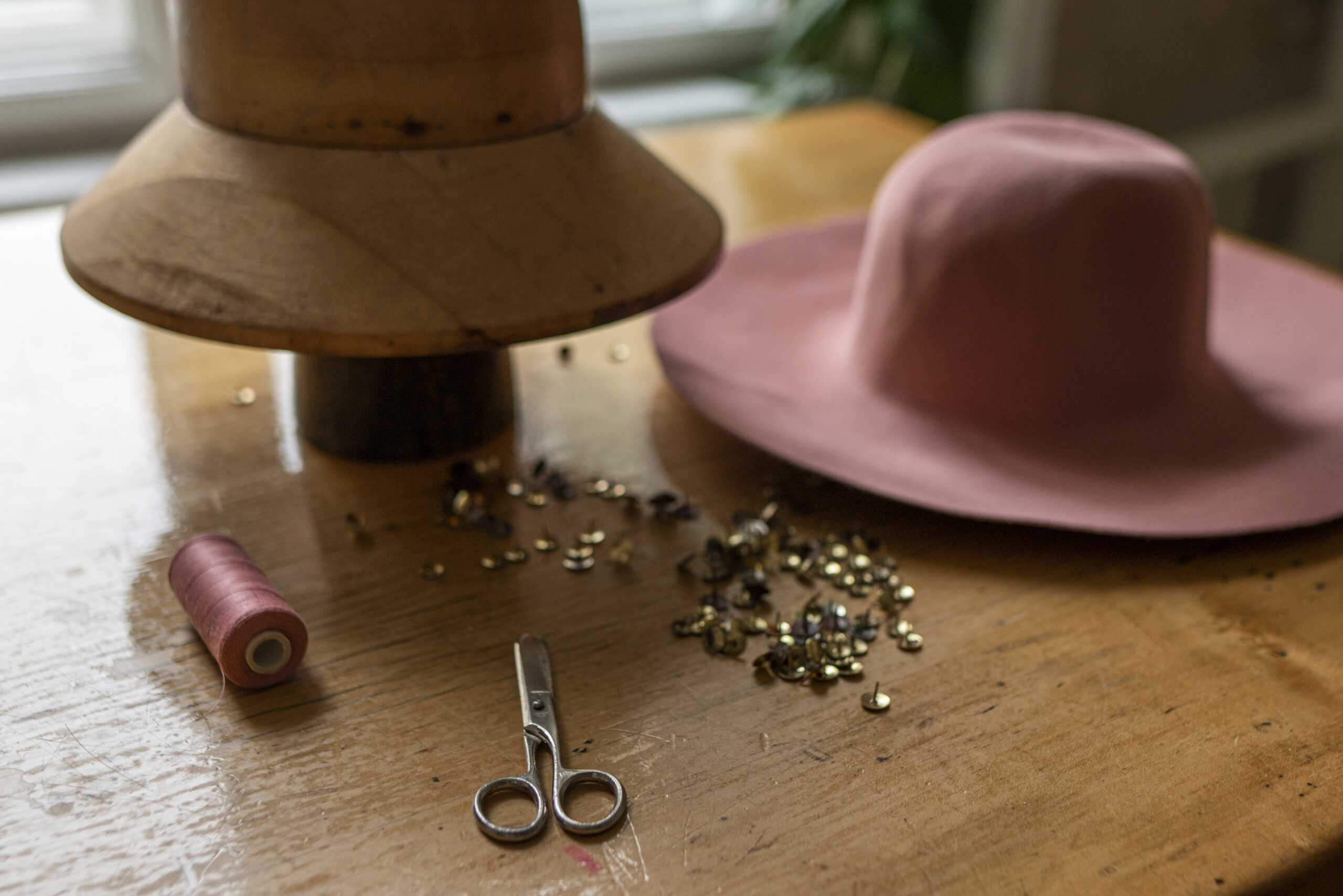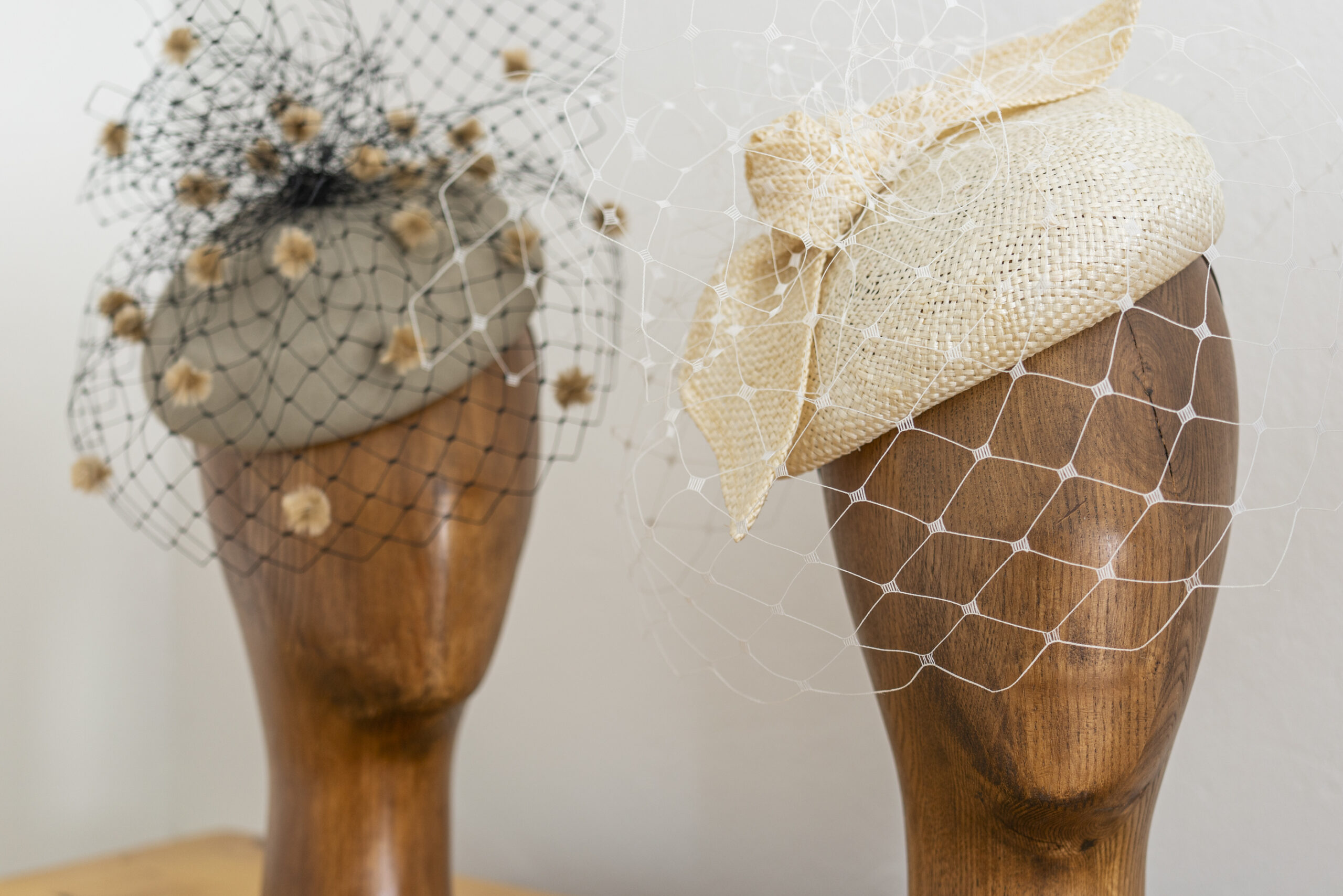Jolana
Kotábová
Millinery



A Milliner – it is an ancient craft of manual making of women’s hats, caps and other head covers according to own designs or drawings.
A Milliner makes hats from various materials. Most often they are made of felt, straw, cloth, plush, feathers and leather.
Rabbit hair felt is the most frequently used material. Felt semi-finished products are made of rabbit hair in Tonak in Nový Jičín. Tonak belongs among the largest producers of hats and materials for hats in the world. The production tradition goes back to 1630. 80% of their production is exported in over 50 countries of the world. A Milliner processes the felt material using steam until it softens and becomes very shapeable. Then she stretches the hat over wooden forms, which can be put on each other and combined in different ways.
In summer the most frequently worn hats are made of straw and there is a wide choice of types of “straws”. They are obtained from various types of grass and seaweeds, bast, palm leaves, sisal and also from strings, paper and plastic. They are variously interwoven. They can be obtained in natural form, coloured or bleached. The best known straw material, panama, is produced in Ecuador. Other straw materials are produced in Italy near Florence, in Vietnam and China. They are wetted and stretched over wooden forms similarly as felt.
Other materials that the Milliner uses to make hats are various cloths, plush or leather.
For hats’ decoration the Milliner uses various ribbons, cloths, veils, feathers, horsehair and flowers.
In our territory milliners were organized in the famous honest Millinery Guild. In the 15th and 16th century the craft flourished. By the end of the 17th century, however, the milliners complained of a lack of earnings and justified their situation in the way that a farmer wears one hat for five years, a ploughboy does not care at all, townswomen wear straw hats and lords prefer wigs and only rarely put a hat on their heads. By the end of the 18th century cylinders came into fashion in England and France and for some time they remained a part of the saloon dress. Later millinery changed in a manufacture mode of production and in the 19th century it became industrialized. Milliners, however, remained in small workshops and mainly specialized in manual processing of custom-made women hats.
In the past a hat was a sign of social status and until 1950s a woman without a hat and gloves was not duly dressed. Due to the labour movement in 1950s hats became a bourgeois relic in the Czech Republic and wearing of hats became quite limited. Women wore scarves or so-called berets.
Despite of that the craft did not entirely vanish and until today women’s hats are being made in this traditional way.
Today people wear hats according to the trend. Lately, hats from 1930s have become fancied as they have a small brim and may be stretched over the ears. Thus women prefer more practical and sporty, elegant models that look casually and still elegant. These are mainly hats with man’s fashions and semi-circular heads of variously lifted on brims. Various berets and toka are also in fashion.
Where to use a hat? – Solemn occasions, such as weddings, funerals, social events, parties, horse races or polo. An original or extravagant hat will be welcome there.
The British Royal Family – hats are inherently associated with them and even if some event does not strictly require so, hats are always welcome. The Queen Mother loved creations with frills and feather, while her daughter usually wears less noticeable hats, which always match the colour of her dress or suit. The Princess Diana also was a fashion icon as regards hats. After several years, the Duchess of Cornwall can be seen wearing amazing hats from the top London milliner, Philip Treacy. At the wedding of William and Kate you could see many guests wearing original hats. When looking at so many beautiful hats one’s heart starts fluttering.